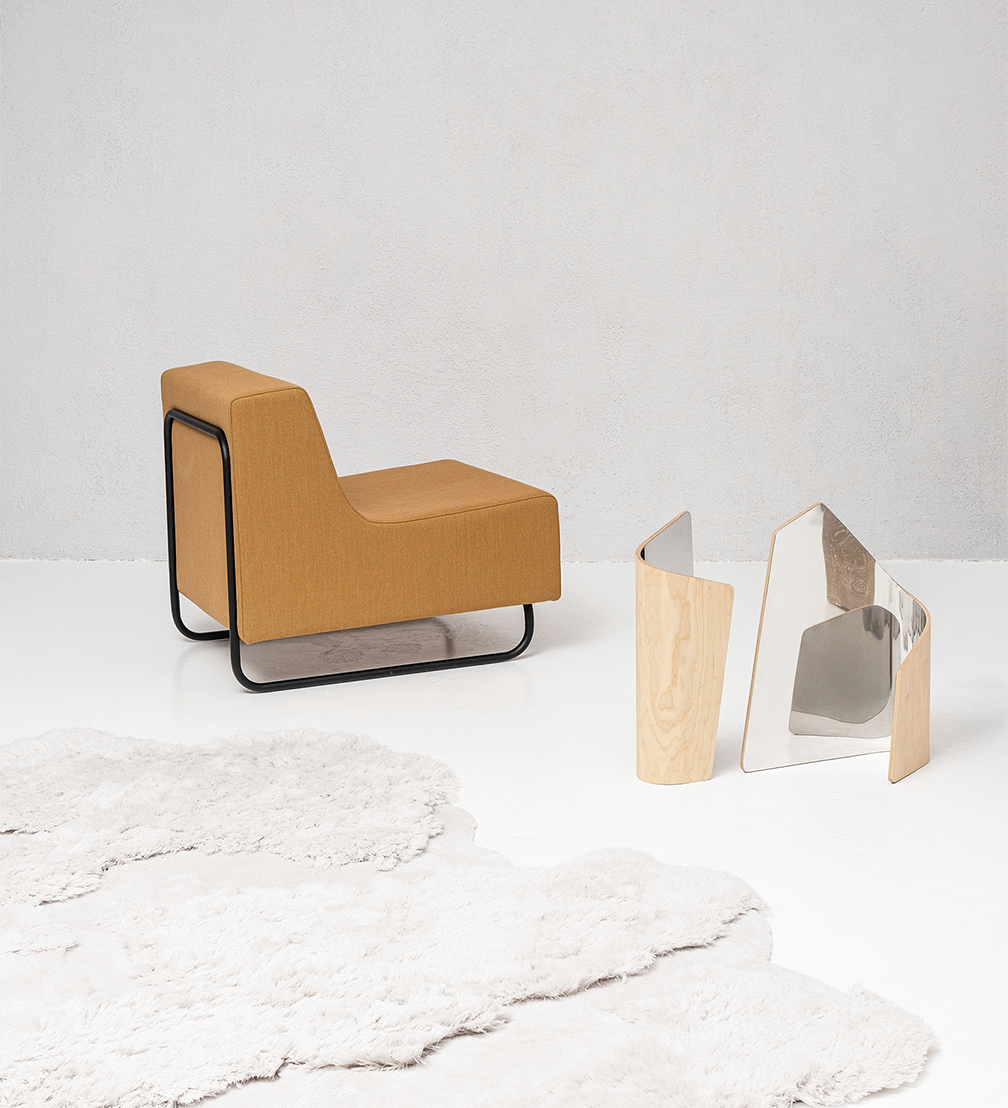
As the Milan Design Week approaches, we present the Estonian designers who will participate in the Baltic contemporary design exhibition Tactile Baltics, on view from April 7 to 13 in Palazzo Litta. Maarja Mäemets, Kertu Liisa Lepik, Heiter X, Myceen, Teresa RA, Annike Laigo, and Standard will show new interpretations of Estonian design heritage, conceptual experiments, and innovations in materials.
The Tactile Baltics exhibition will present furniture, lighting, textiles, tableware, craft, and collectible design, all driven by a commitment to material experimentation, sustainability, and circular design principles. Focusing on the tactile nature of design, visitors will engage with how traditional craftsmanship intersects with cutting-edge technology, exploring the dynamic interplay of form, function, and heritage. With a blend of established and emerging designers, Tactile Baltics will unveil a compelling mix of designs from Latvia, Estonia, and Lithuania, illustrating the diverse, innovative spirit of the Baltics. The works for the Estonian exhibition have been selected by curator Triin Loks.
Thirst watering cans and collection Sand Castles by Maarja Mäemets
Thirst is a captivating series of fiercely crafted, mould-blown, and hand-sculpted glass watering cans that celebrate the remarkable versatility of the material. Transforming the act of pouring into a sacred ritual, each piece seamlessly merges function and artistry. Inspired by the metaphor of nurturing and growth, Thirst underscores the importance of tending to life’s meaningful aspects. The series serves as a reminder to stay present, embrace abundance, and pursue a life filled with purpose. The Thirst series were preceded by glass domes named Sand Castles, first created for Mäemets’ 2023 solo show. Rooted in mindfulness practice, the glass dome serves as a symbolic shield — allowing thoughts to pass while protecting the self from their constant pull.
Maarja Mäemets is an Estonian artist, designer, and curator currently based in Stockholm. With a background in glass art (MA, Estonian Academy of Arts, 2018) and presently pursuing a second master’s degree in craft studies, she merges artistry with conceptual exploration. Her practice highlights the interplay of materiality, technique, and the profound narratives woven into everyday rituals
More about Maarja Mäemets on her website and Instagram.
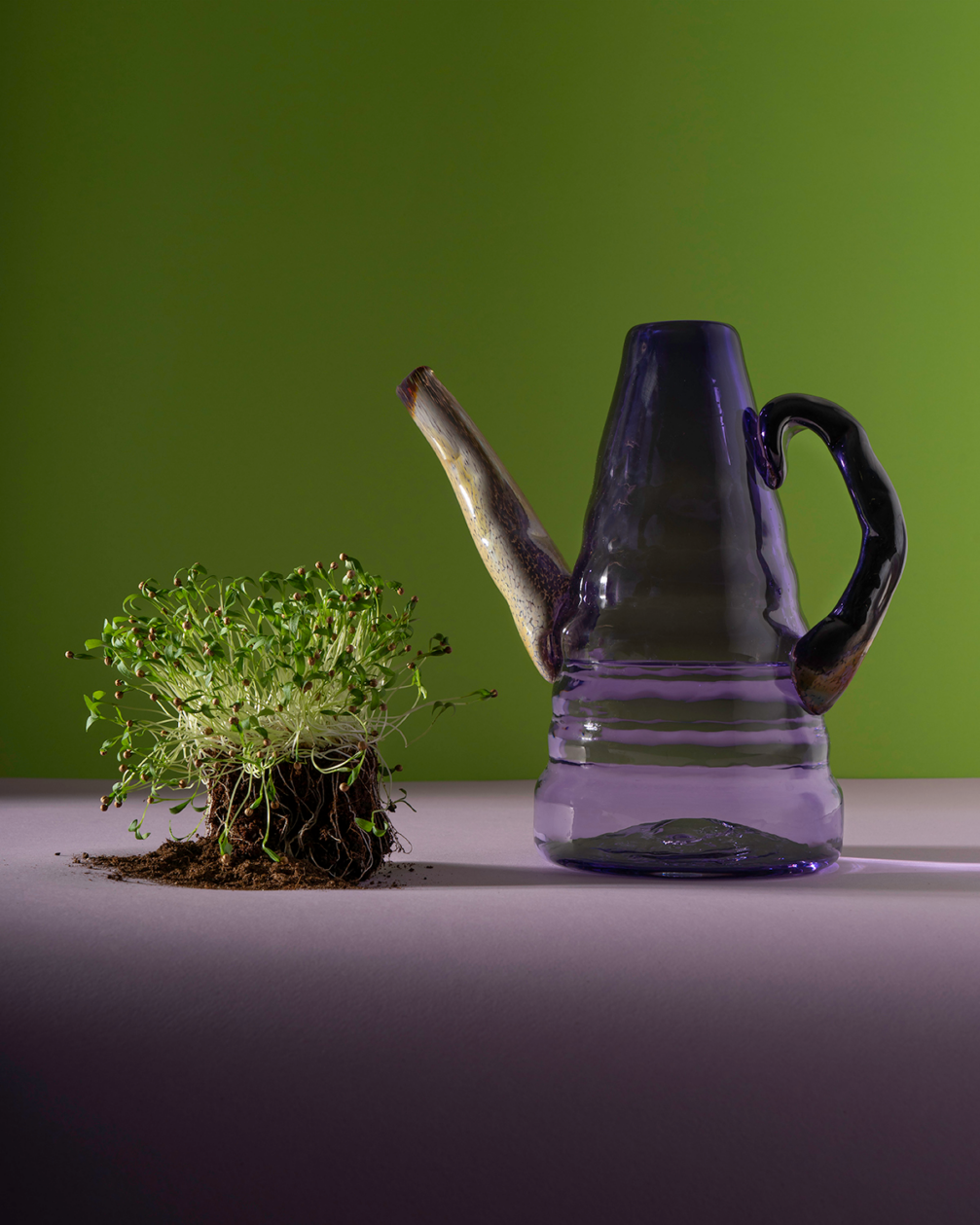
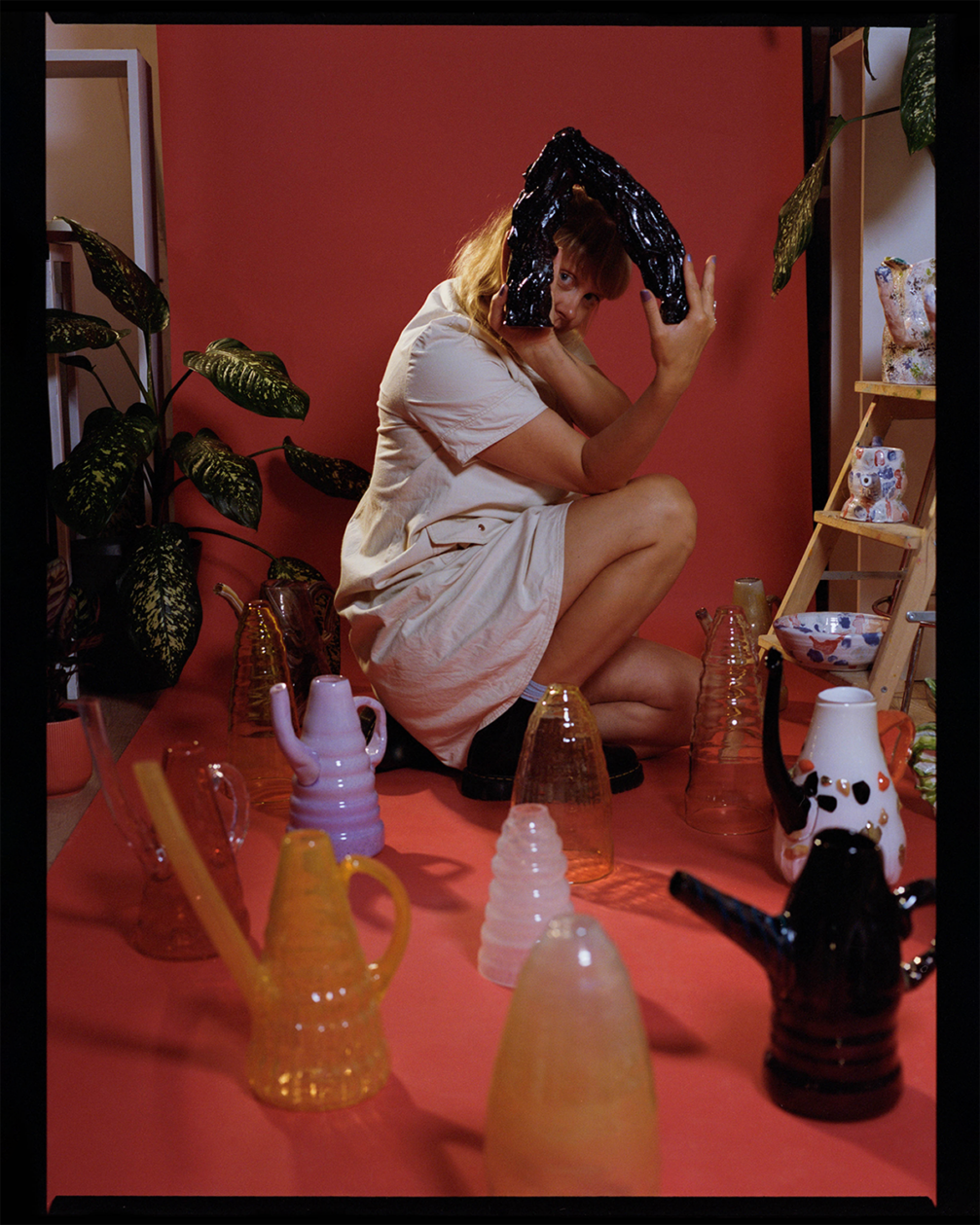

Ade series mirrors by Kertu Liisa Lepik
The Ade series draws inspiration from Plymax — metal-faced plywood introduced by the Luther factory in Estonia in the 1920s. Known for its rigidity and durability, Luther’s Plymax was ideal for making doors, partitions, and cubicles. But could this material be reimagined to be softer and more expressive? The Ade series explores these questions by displaying the possibilities of bent plywood together with polished steel. Together, these materials form a functional mirror while creating as an abstract artwork. The works were produced as part of the Bend to Break project at the Estonian Academy of Arts in 2022.
Kertu Liisa Lepik is a designer with a passion for turning complex ideas into creative, impactful solutions. To her, design is like solving a puzzle — gathering information, analysing connections, and rearranging the pieces until something innovative emerges. Liisa is currently working as a graphic designer.
More about Kertu Liisa Lepik on her website.
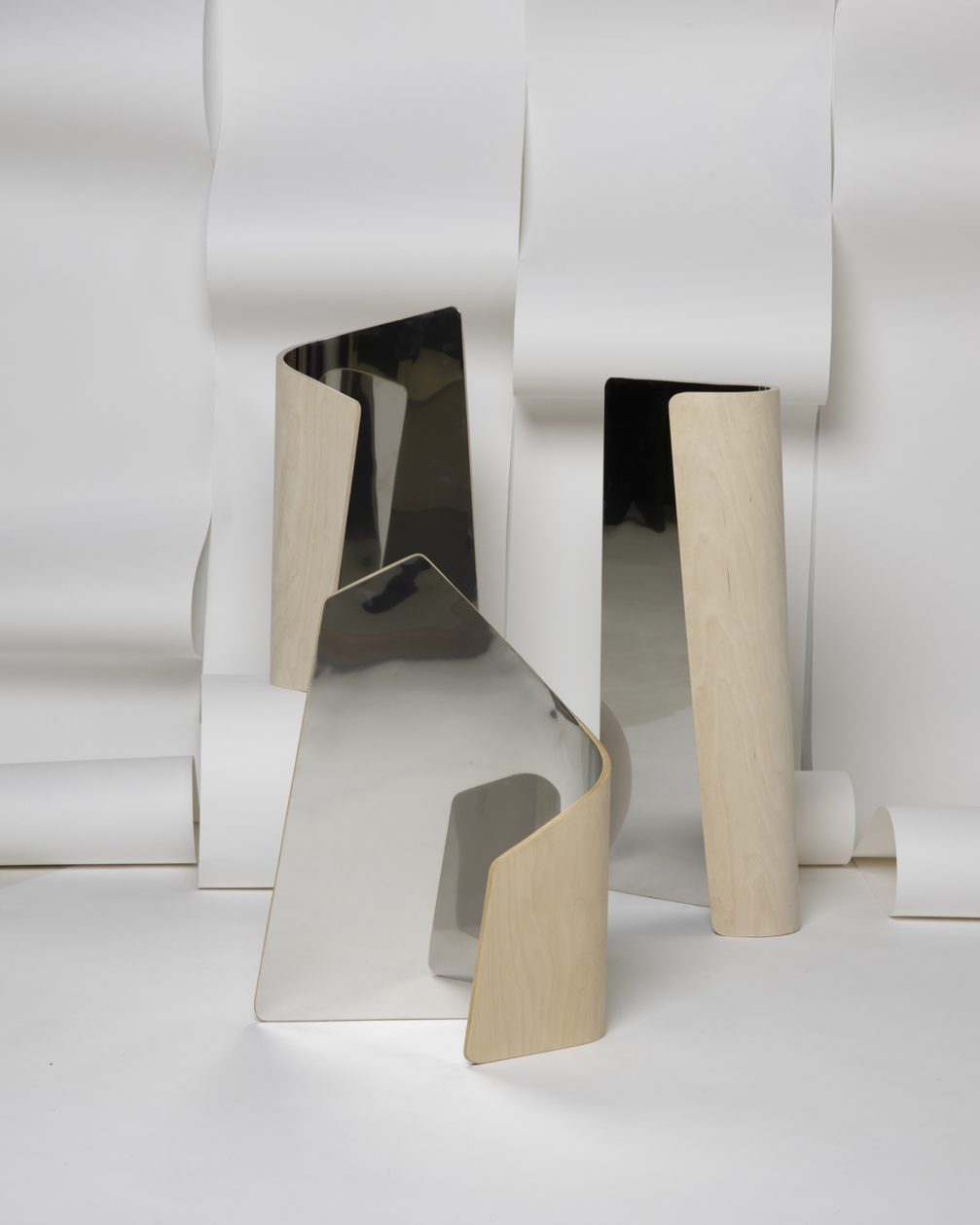
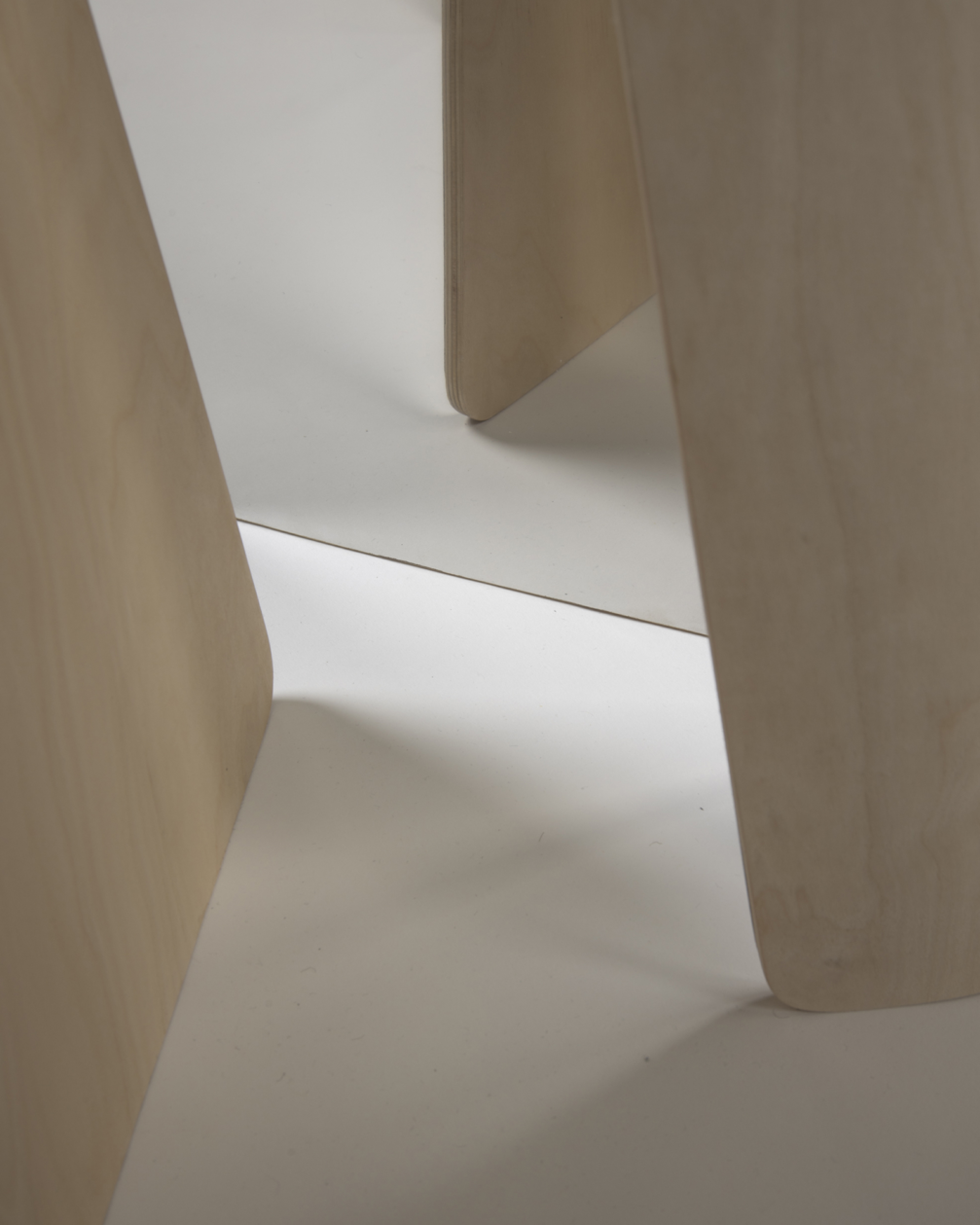
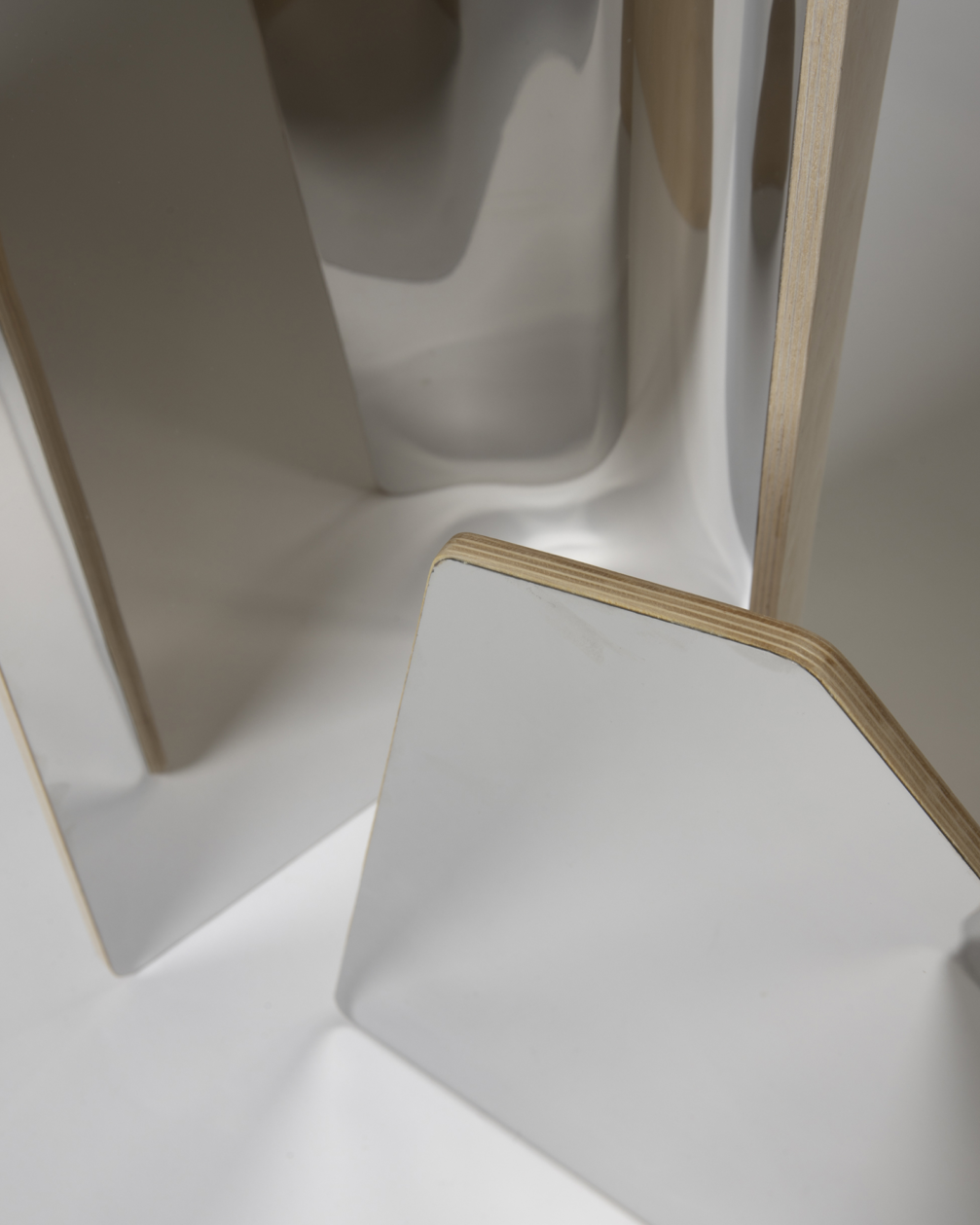
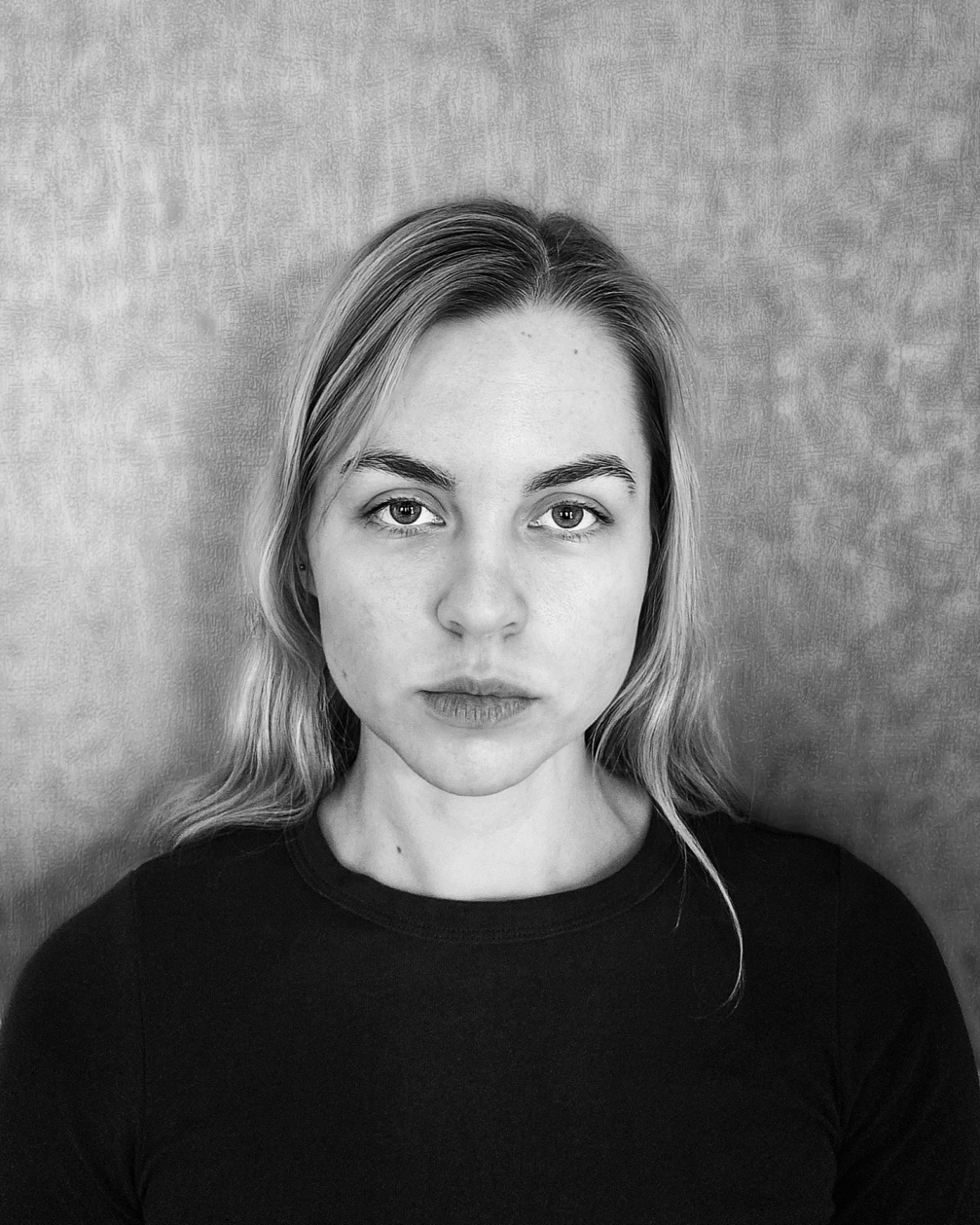
Axiom–1 and Axiom–2 by Heiter X
Axiom–1 and Axiom–2 are contemporary relics — objects that exist beyond linear time, bridging an advanced past and a lost future. These sculptural forms explore spatial consciousness, responding to presence and interaction through material transformation. Inspired by altars and standing stones, they act as shelf-like vessels — holding plants, objects, or offerings — shaping the atmosphere of a space. Axiom is a fragment of a world that remembers something we have not yet discovered.
Heiter X is an artist-designer exploring the interconnectedness of food, people, and the environment. Specialising in sustainable design, she creates sculptural forms and immersive experiences that reveal the vitality of materials and their unseen energies. Grounded in the belief that consciousness shapes reality, her work invites a heightened awareness of the living world. Influenced by sacred landscapes and natural forms, she explores objects as vessels of presence and transformation.
More about Heiter X on her website and Instagram.
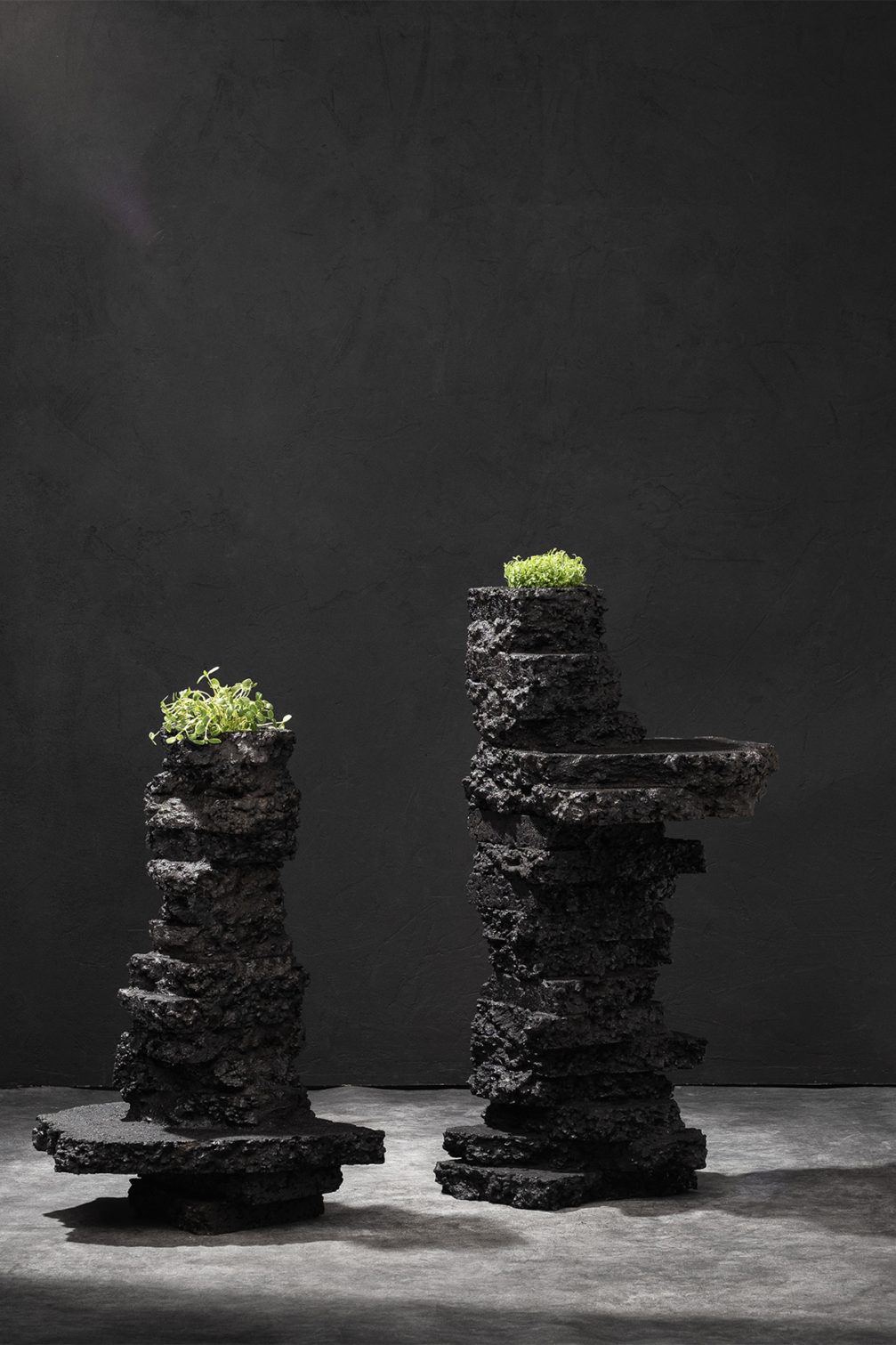
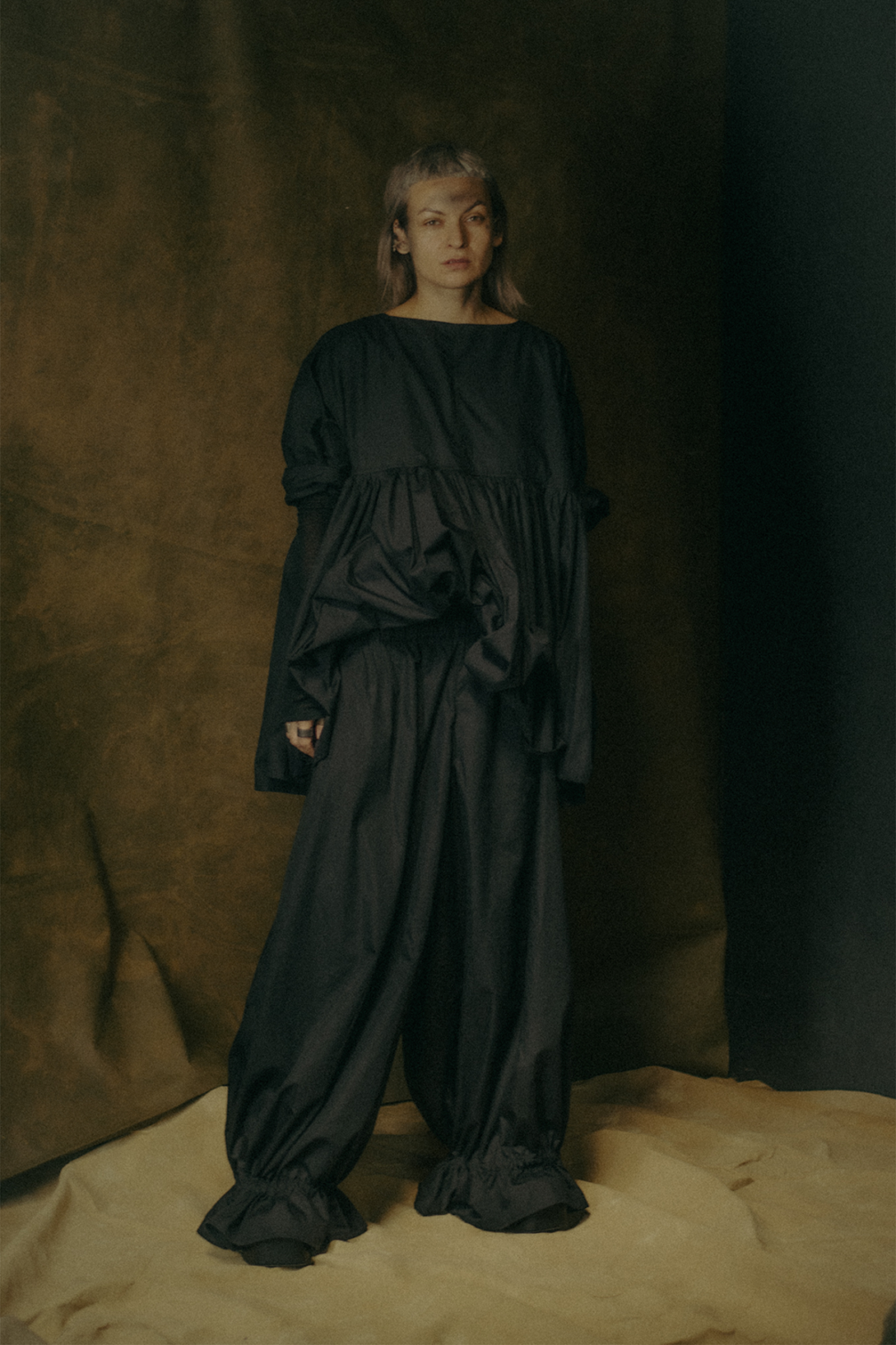

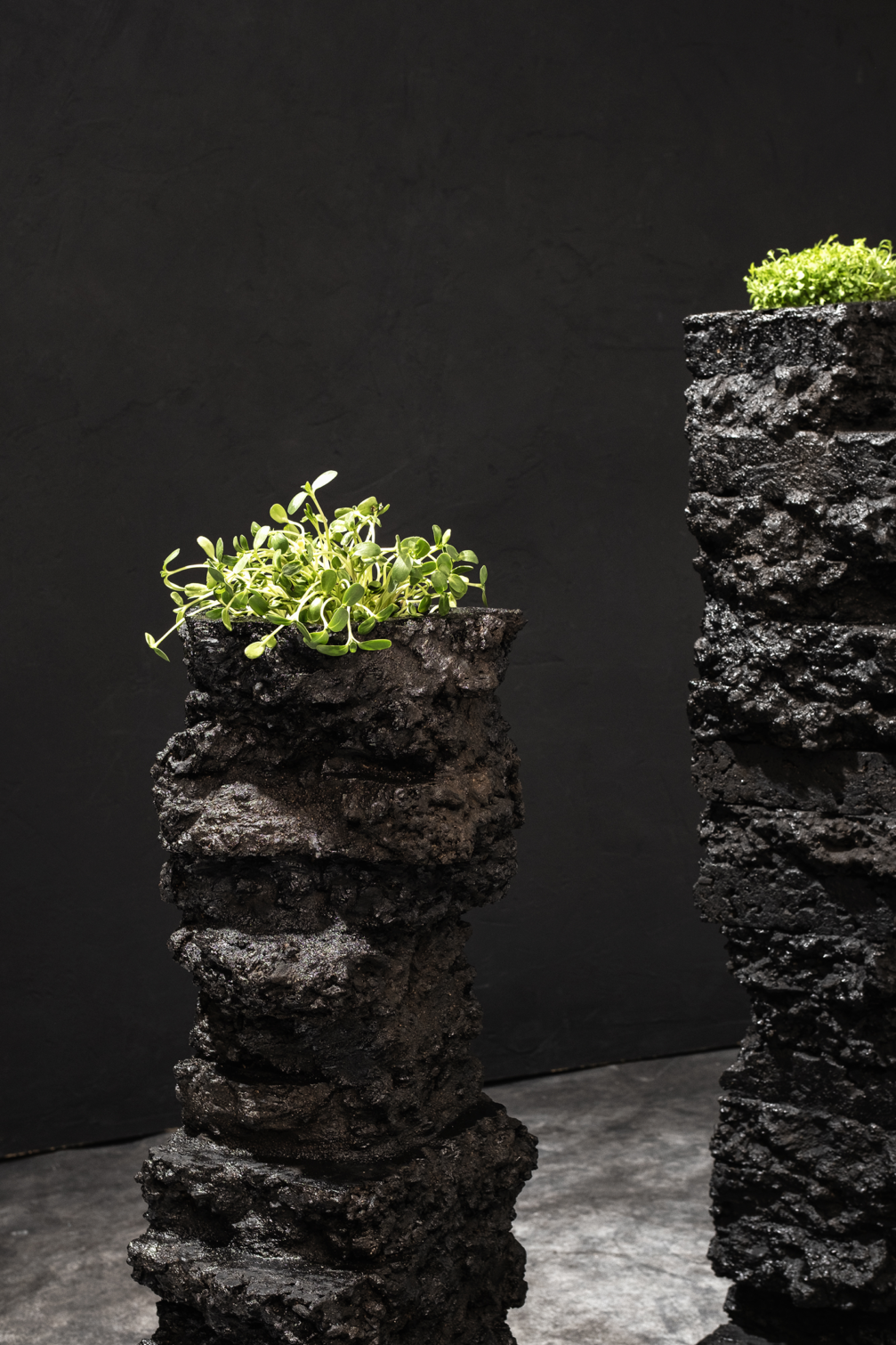
P Wise lamp and Lo Blox mycelium blocks by Myceen
Pendant lamp P Wise is grown from mycelium-based material and was initially developed for fintech company Wise’s Tallinn headquarters to improve its acoustic properties. Two separately grown parts are put together during the production process. The mycelium recognises its species companion and grows the material together without any glue or additives needed. Multifunctional Lo Blox were initially designed for Maidla Nature Resort. These monolithic blocks of mycelium-based material can be used as a seat, side table, or a plinth.
Siim Karro is the designer and co-founder of Myceen, an award-winning biotech company and research studio specialising in the development of mycelium-based materials and design. In his practice, Siim relies on an interdisciplinary approach that combines nature’s intelligence with science and design. In 2024, Siim received the Young Designer Award SÄSI from the Estonian Design Association, recognising his contribution to building Myceen as a designer with a distinct and forward-looking vision.
More about Myceen on the company’s website and Instagram.
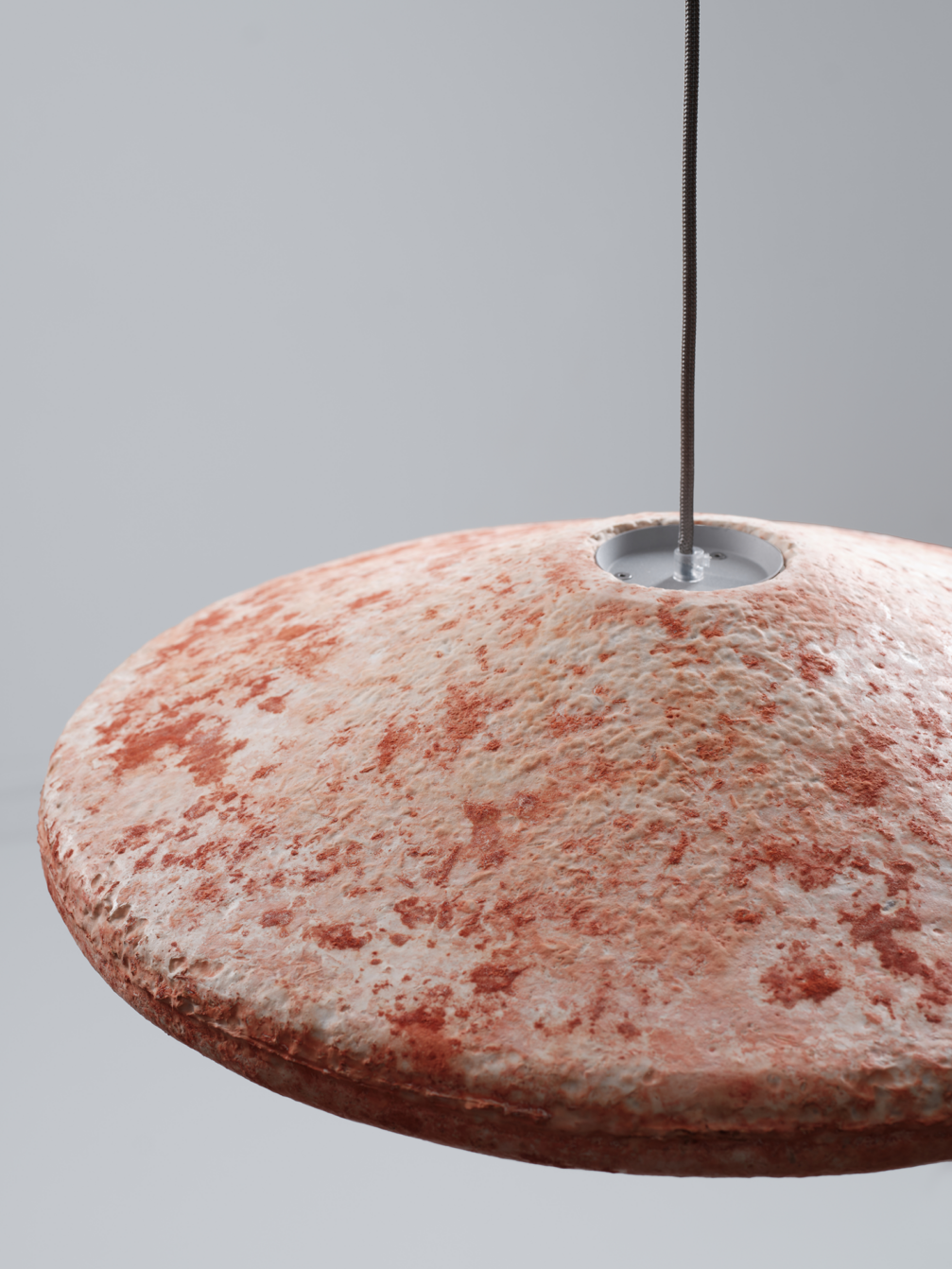
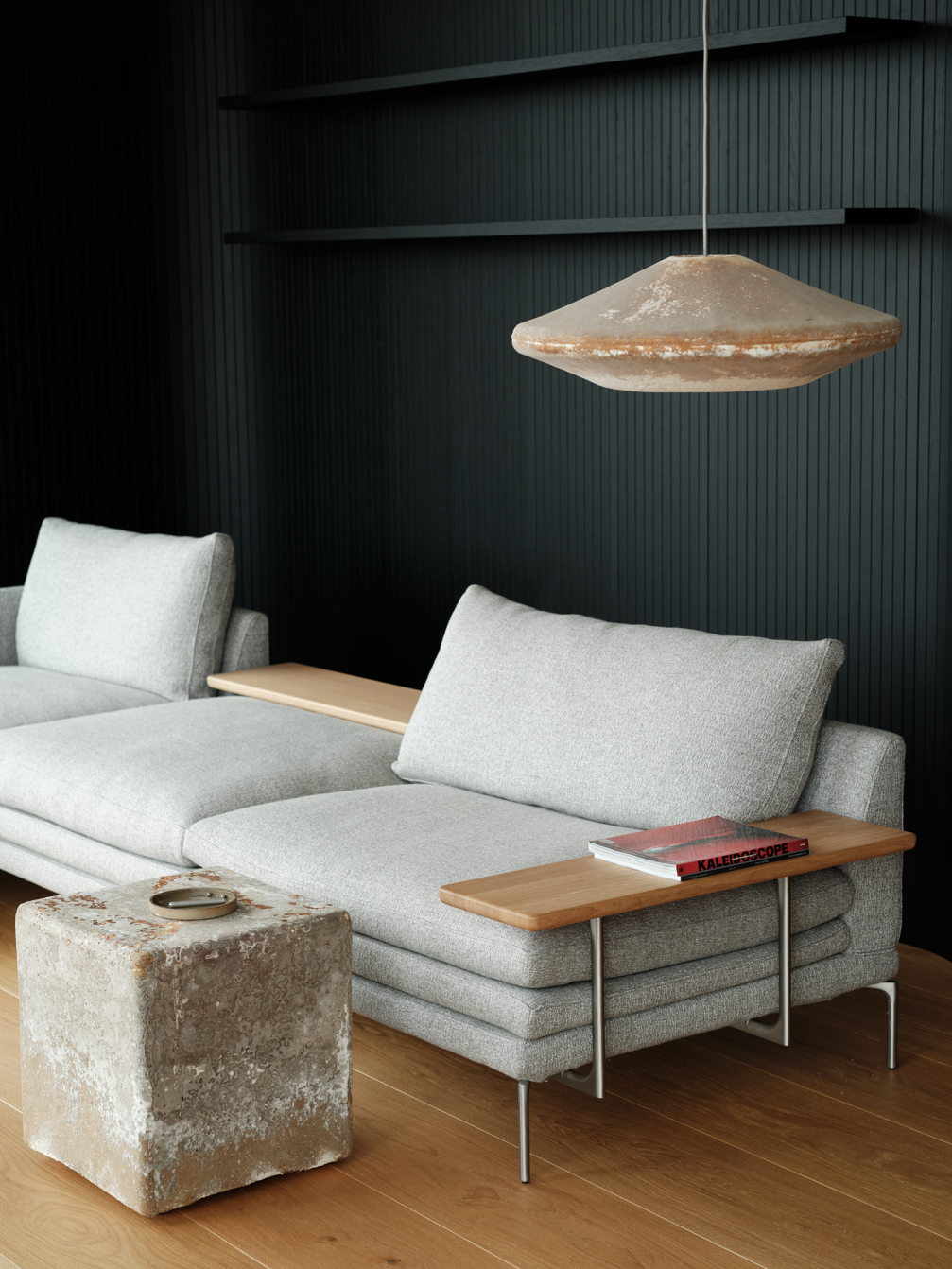
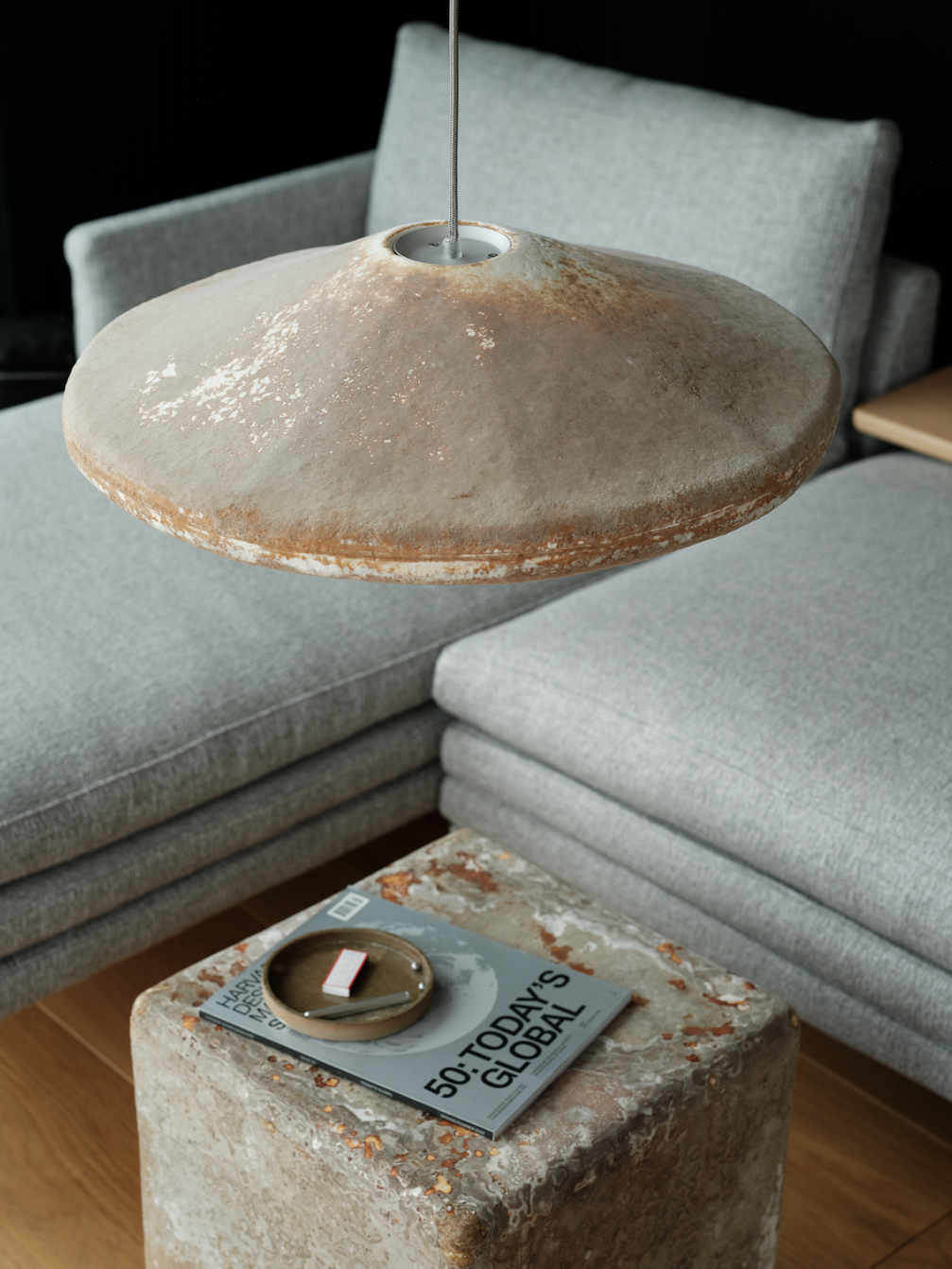
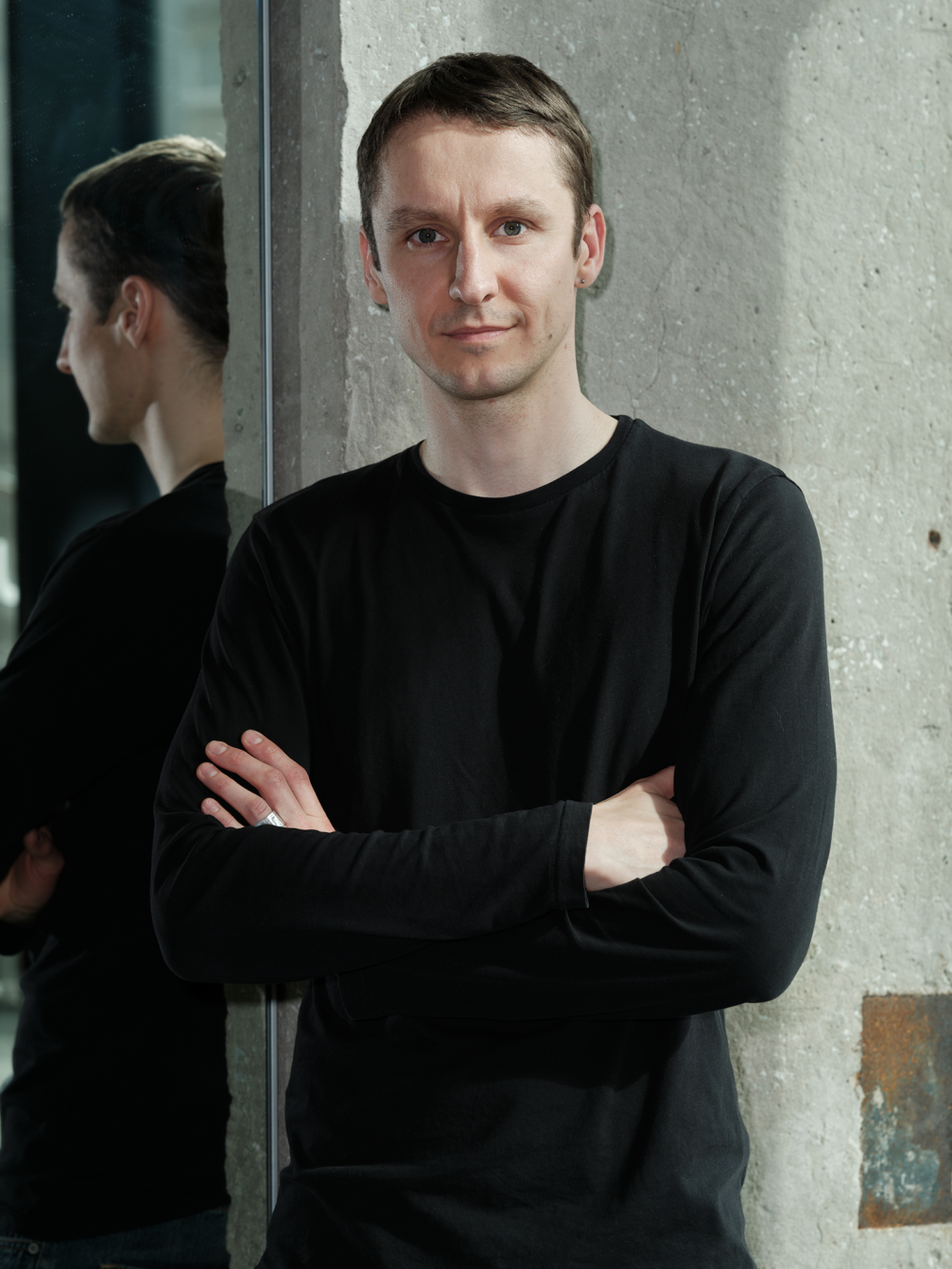
Dzeršanas trauki «Tilt Collection» — Teresa RA
Inspired by bamboo plants that are used as water pipes, Tilt Collection is a porcelain tableware drinking set. With two sized carafes, one water and one coffee cup, this collection combines the simplicity of the shape with the elegance and amusement of its movements, making the gesture of pouring and drinking extremely ergonomic. The set was created as part of the joint project Slow Design by the Ceramics and Product Design Departments of the Estonian Academy of Arts, which aimed to create sustainable objects that bring joy to both their creators and users.
Teresa RA is currently a ceramic student at the Estonian Academy of Arts. After starting her ceramic journey in 2021, she began collaborating with Clay Kitchen Portugal and learning from its masters. She focused on materials, building her own Raku kiln and experimenting with glazes. Now working in both art and design, Teresa aims to expand her material knowledge. With a background in philosophy and art, she has worked as a social advocate in the fields of sustainable development and climate change.
More about Teresa RA on her Instagram account.
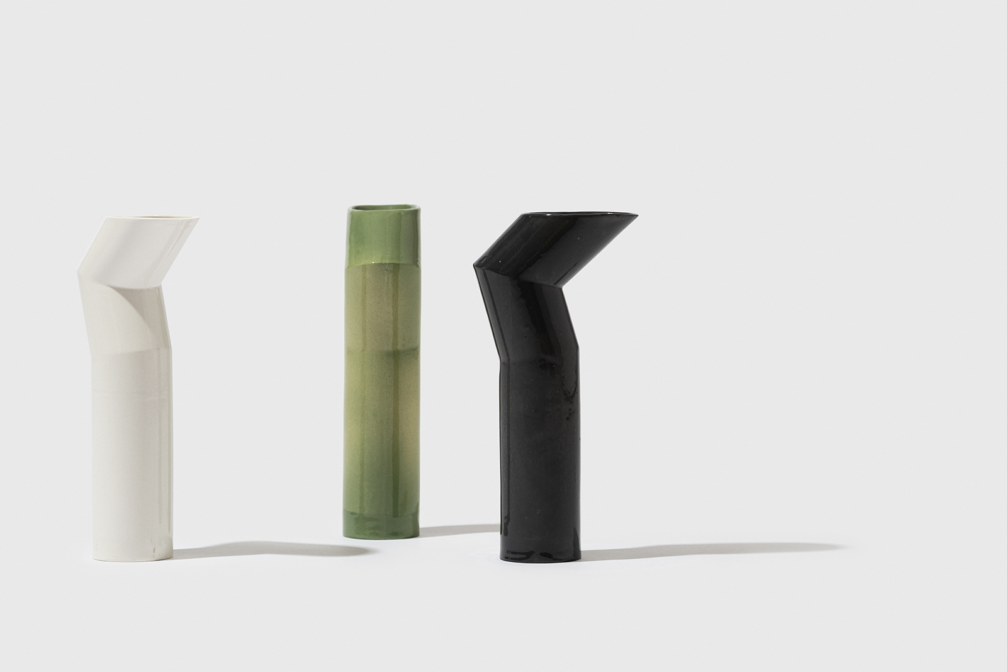
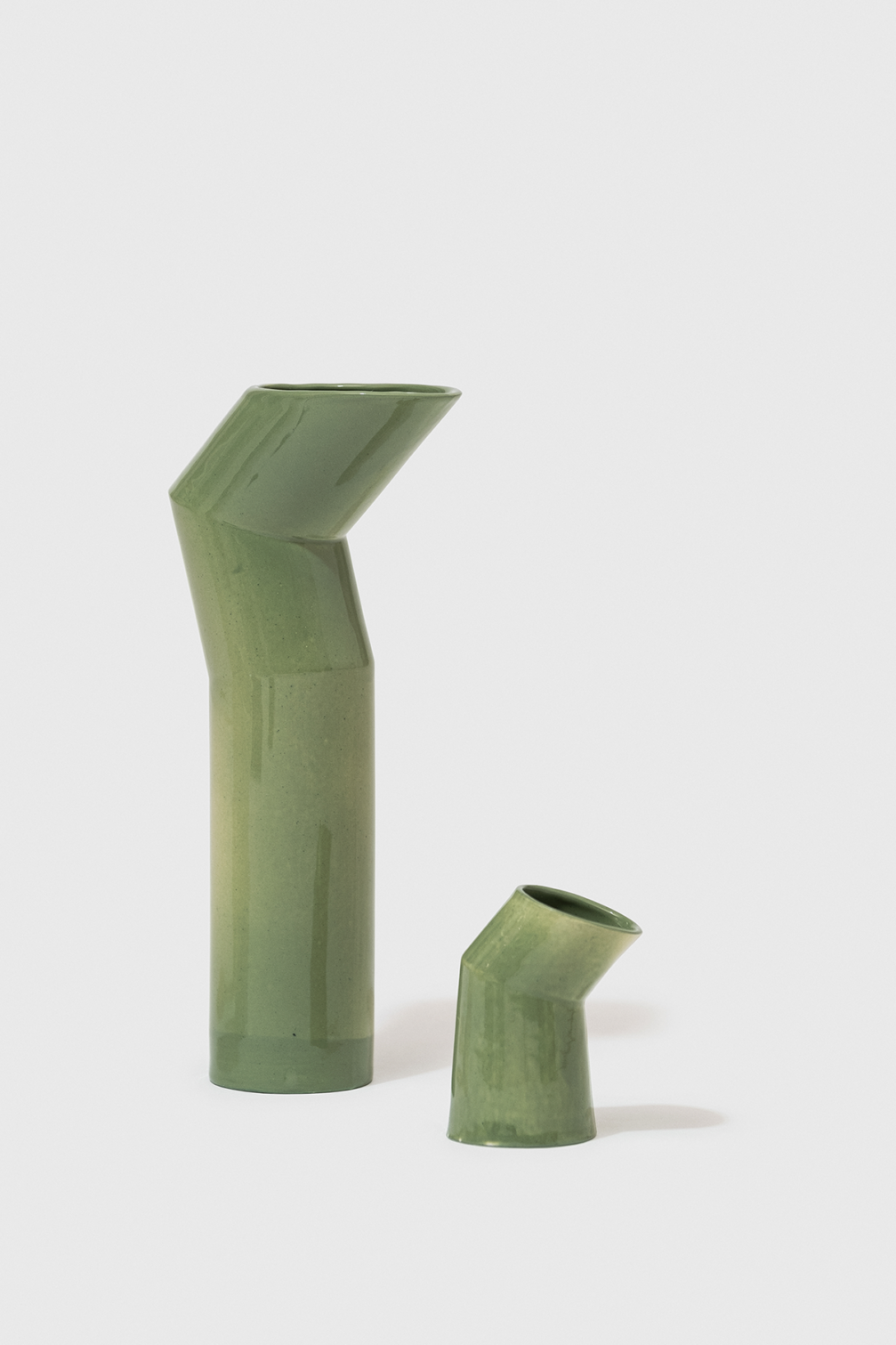
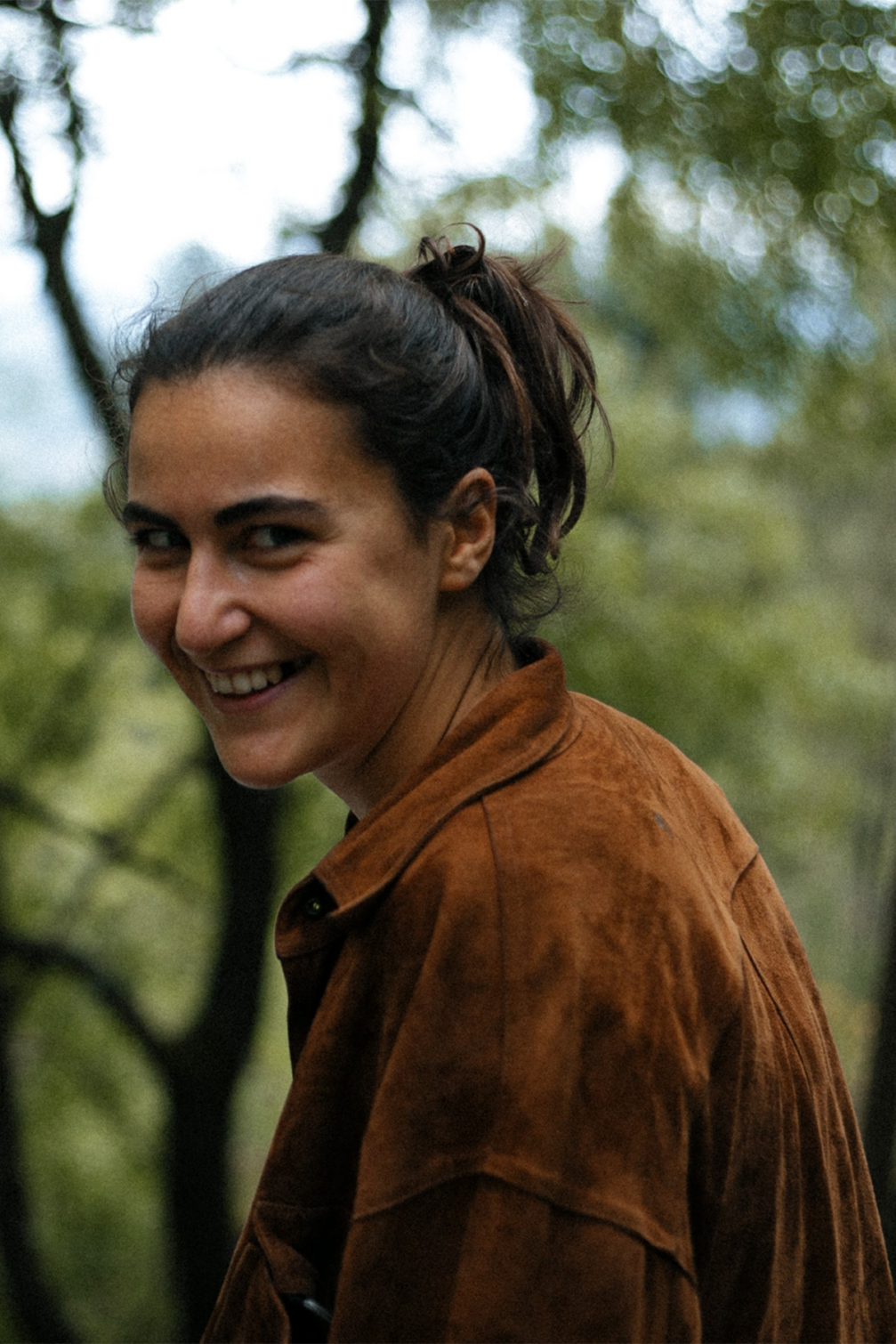
Archipelago rug by Annike Laigo
The Archipelago collection draws inspiration from the delicate contours of Nordic landscapes — the shapes of islets, bays, and the gentle movement of reeds. These organic forms overcome the limitations of traditional rug shapes, offering something more fluid and adaptable. Crafted from renewable materials, each piece blends effortlessly into diverse environments, bringing warmth, comfort, and balance. Available in customisable sizes, Archipelago transforms any space with understated elegance.
As a designer, Annike creates rugs that explore the subtle relationship between colour, texture, context, and atmosphere. She aims to design pieces integral to a space, offering function and character. Each rug is crafted as a dialogue with its surroundings through bespoke solutions or carefully crafted collections. With an emphasis on the process of making and the knowledge gained, her work celebrates the balance and the impact a well-made rug can bring to a space.
More about Annike Laigo on her website and Instagram.
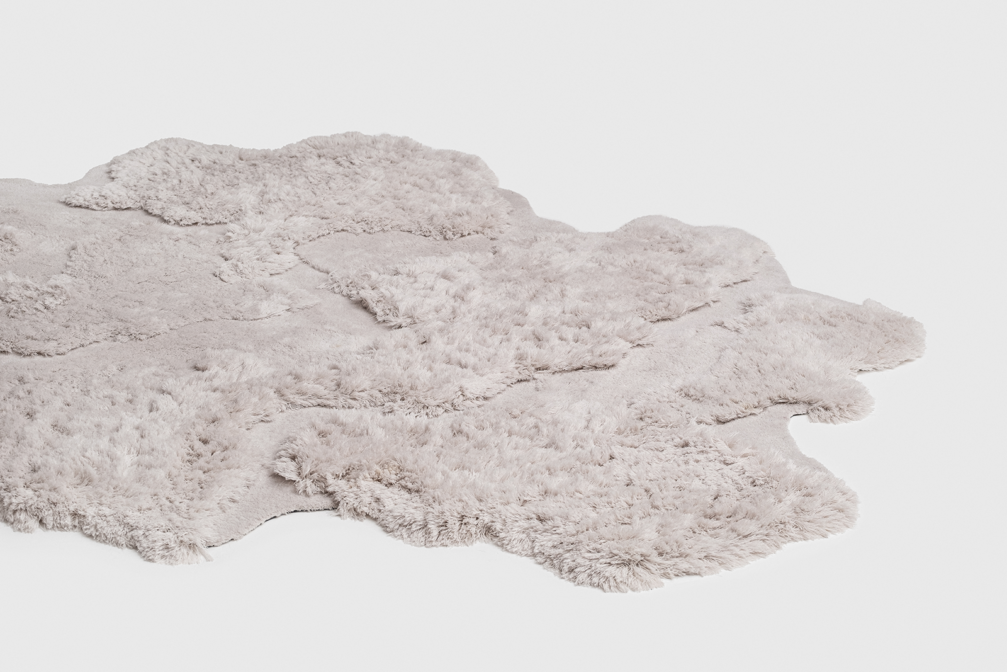
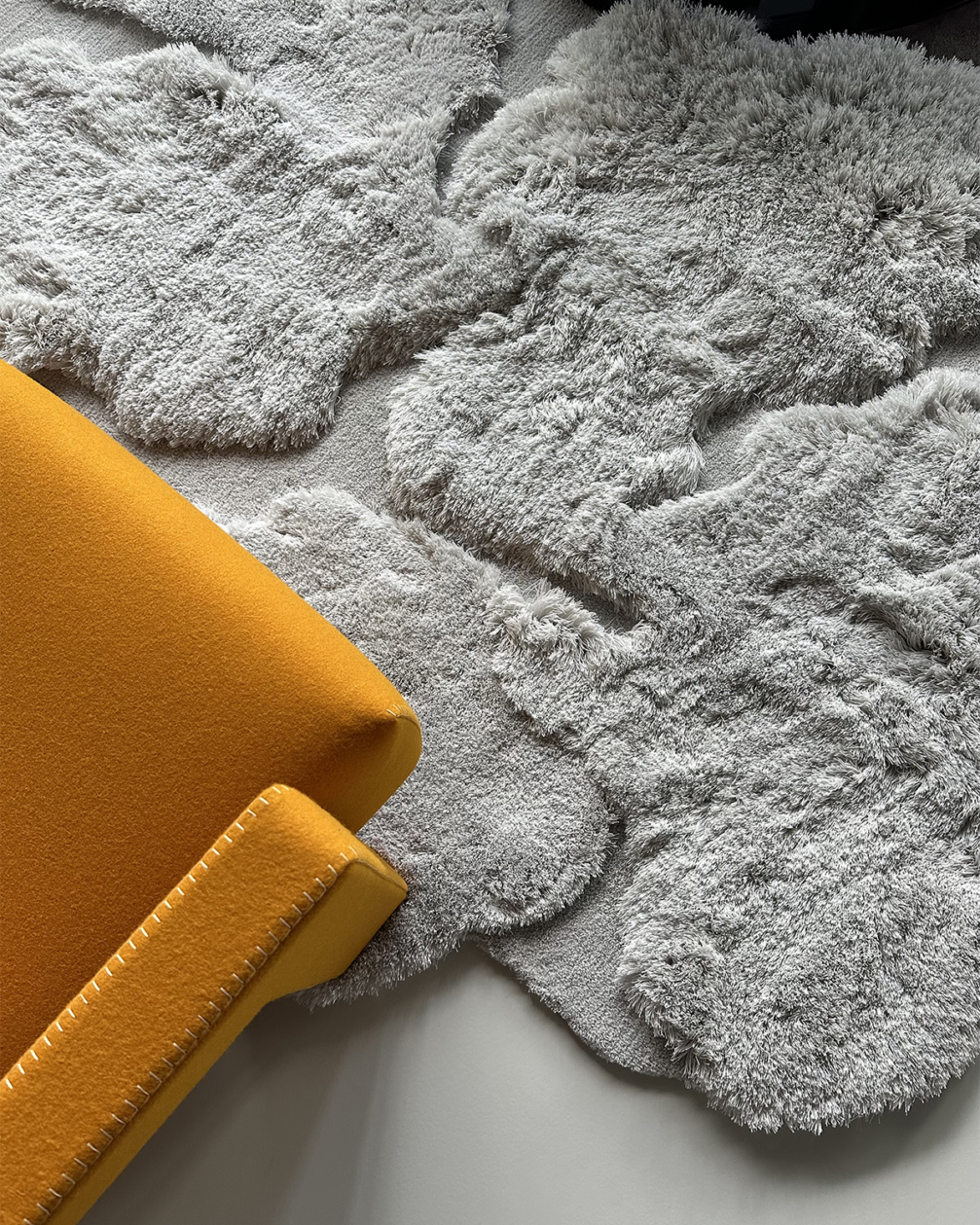
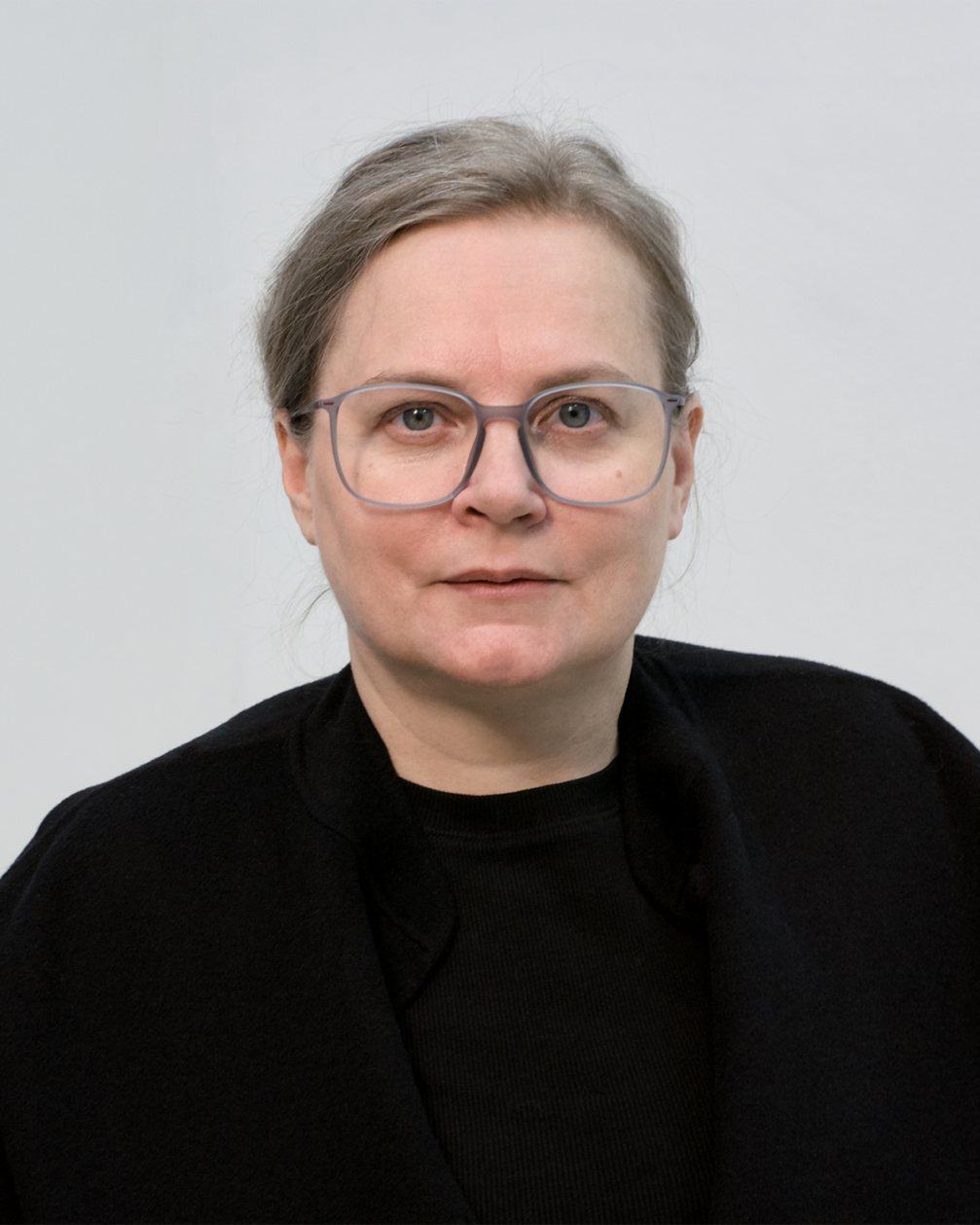
1973 armchair by Standard, Maile Grünberg, and Juta Lember
On the occasion of their 80th anniversary, Standard, Estonia’s oldest furniture manufacturer, is proudly launching a re-edition of some of its iconic designs. The 1973 armchair, created by Maile Grünberg and Juta Lember, is an emblematic piece of Estonian design. This new collection once again echoes the bold colors and design of the 1970s and will be available this month.
In the second half of the 1960s, Maile Grünberg and Juta Lember joined the design team of Experimental Furniture Factory Standard. As a result of their collaboration, a popular furniture series was created in 1973, based on a bent tube construction and upholstered bent plywood seats. At that time the armchair was produced by historical furniture manufacturer Tarmeko, formerly Tartu Mööblikombinaat. The series was widely featured in public spaces and office lounges, highlighting the rise of lounge furniture in workplaces during the 1970s. This shift reflected the era’s free-spirited mindset, promoting comfort, informality, and a more relaxed office atmosphere.
More about Standard on the company’s website and Instagram.
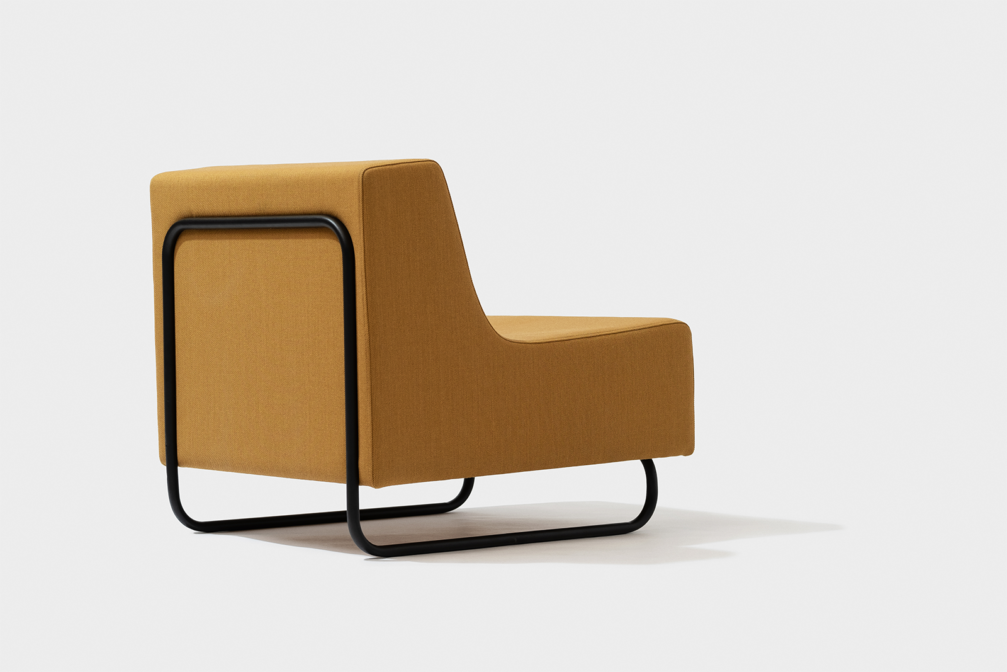
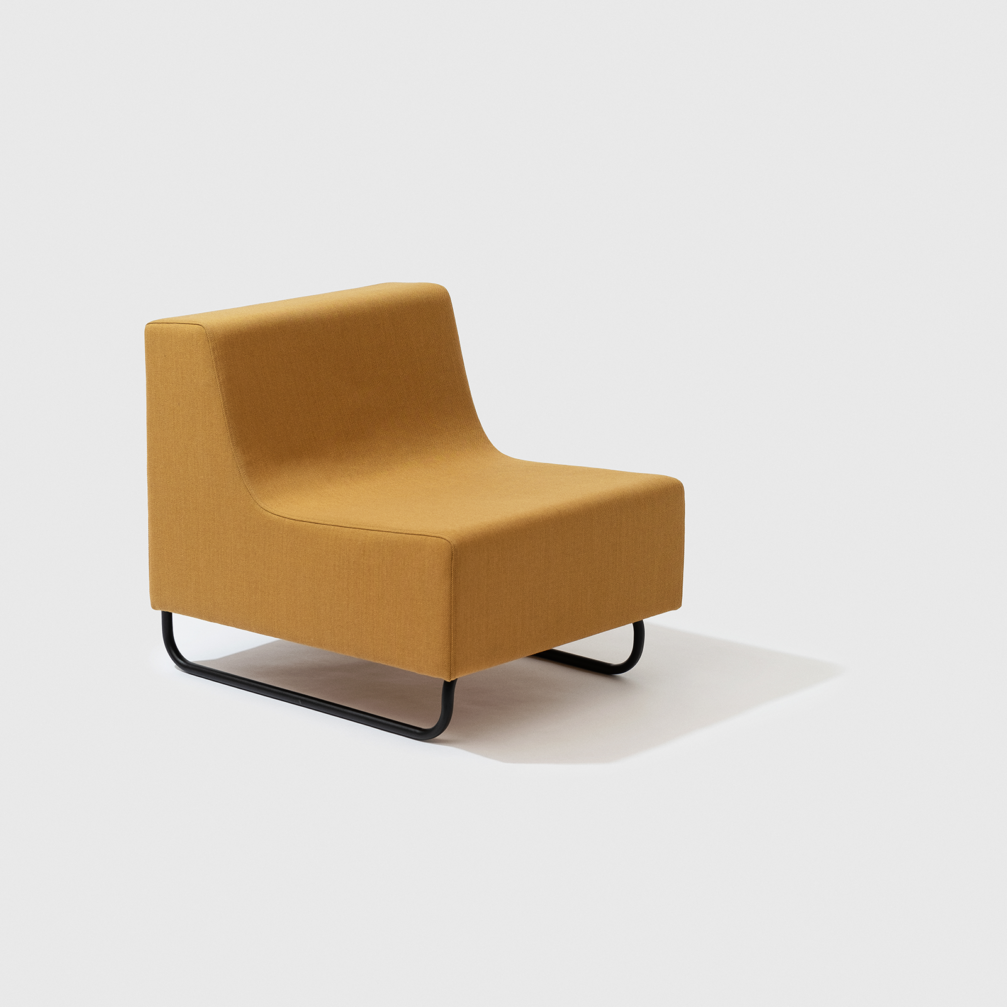
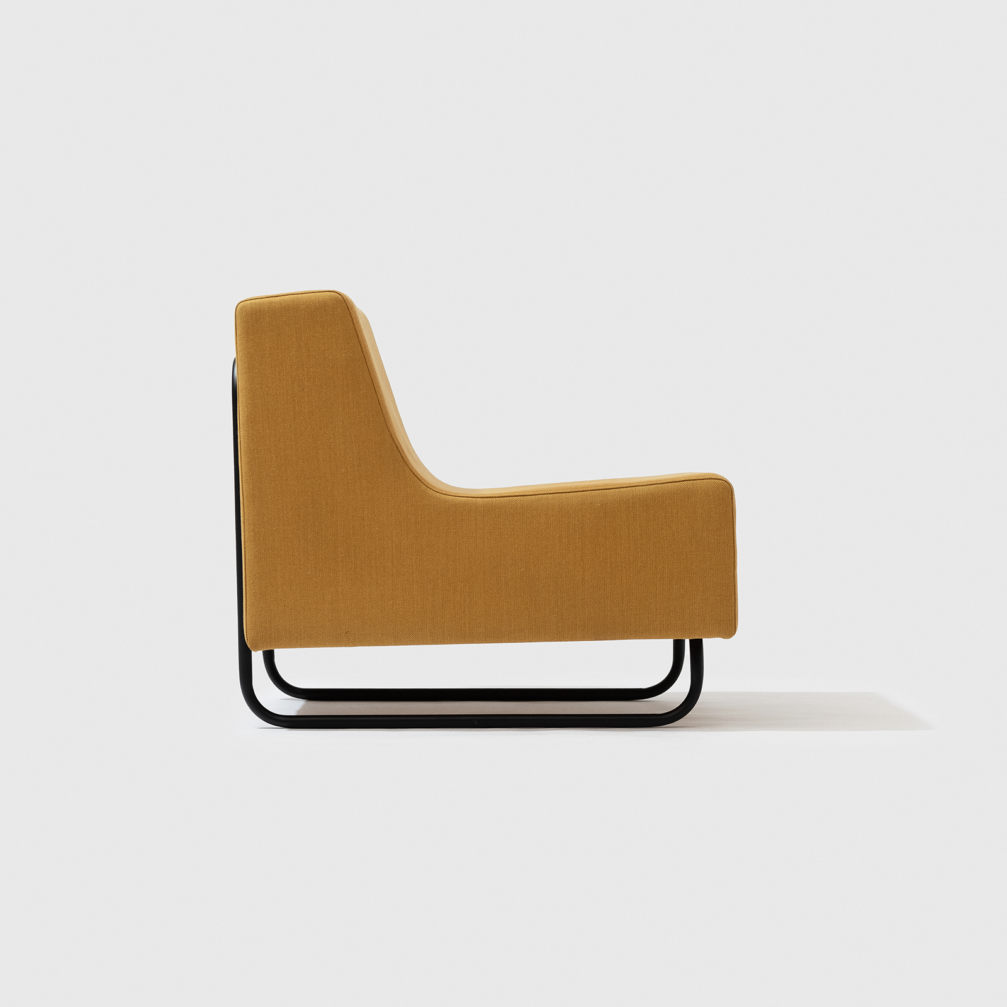
About Tactile Baltics
Following a successful debut at London Design Festival 2021, where it received an enthusiastic response, Tactile Baltics continues to serve as a platform for contemporary Baltic design, fostering appreciation and international recognition.
The Tactile Baltics exhibition at the Milan Design Week 2025 will be on view from April 7 to 13 at Palazzo Litta (Corso Magenta 24, 20121) in room 16 as part of the MoscaPartners Variations group exhibition. To visit the exhibition, register here.
Tactile Baltics in Milan is organised by the Latvian Design Centre, the Estonian design agency NID, and the Lithuanian Design Forum. Curated by Dita Danosa, Latvia; Triin Loks, Estonia; Audronė Drungilaitė, Lithuania. Graphic design by Kirils Kirasirovs (Augusts). Exhibition design by Brigita Bula (Brigita Bula Architects).
Tactile Baltics at Milan Design Week 2025 is funded by the Baltic Culture Fund, Ministry of Culture of the Republic of Latvia, Ministry of Culture of the Republic of Estonia and supported by the Embassies of the Republic of Estonia, Latvia, and Lithuania in Italy.
More information on the exhibition on the Tactile Baltics website and Instagram account.
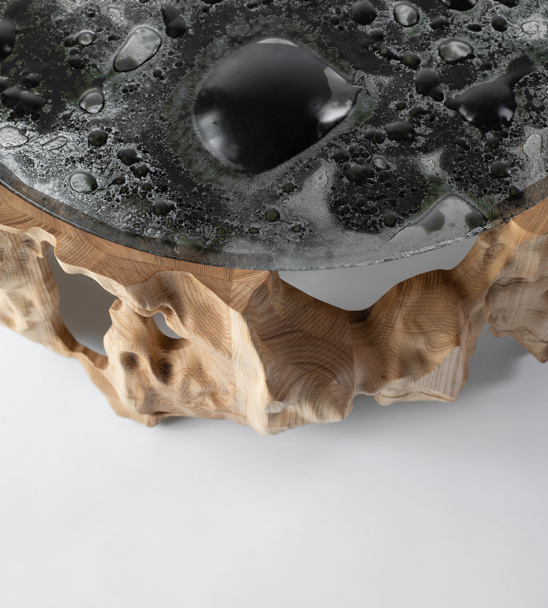
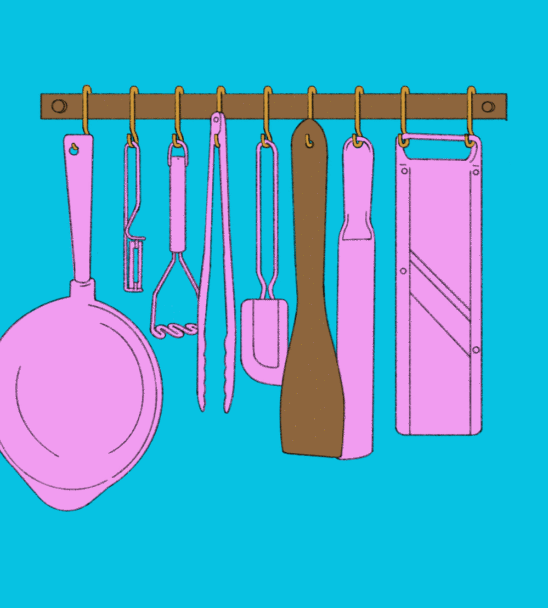
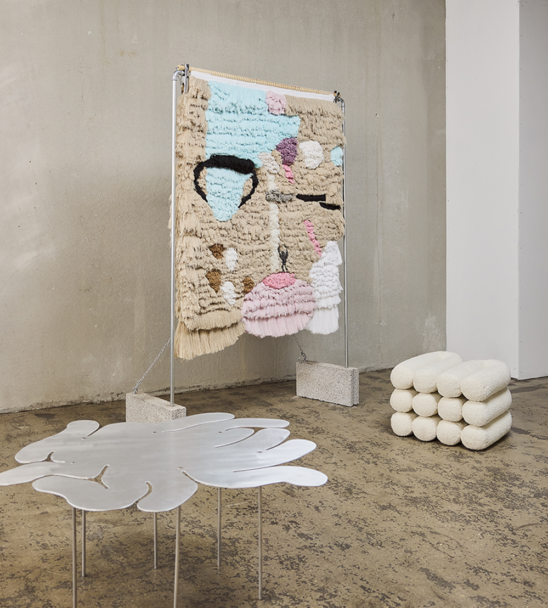

Viedokļi